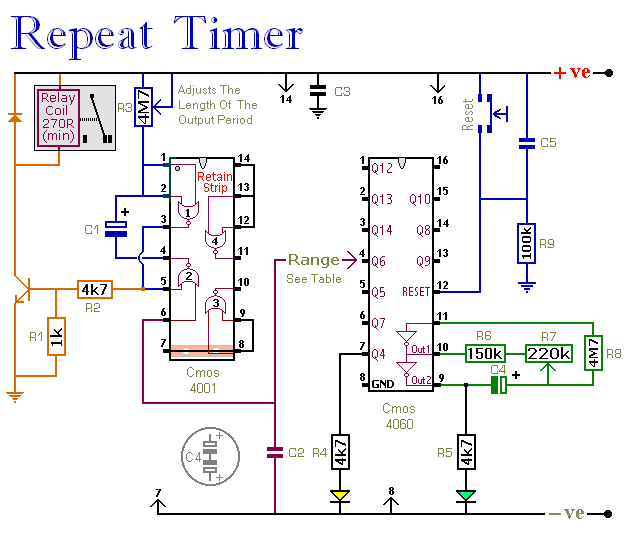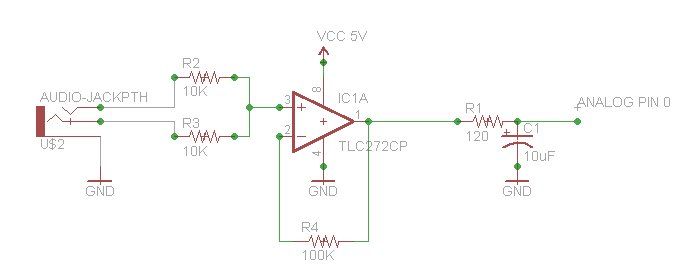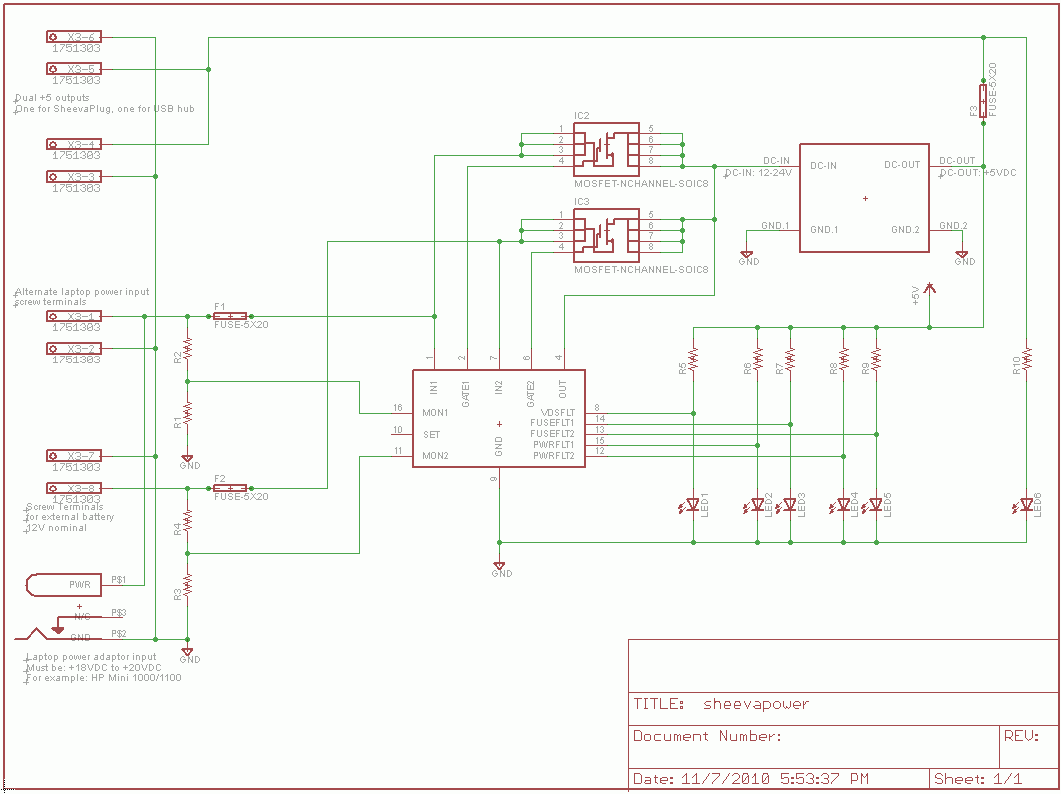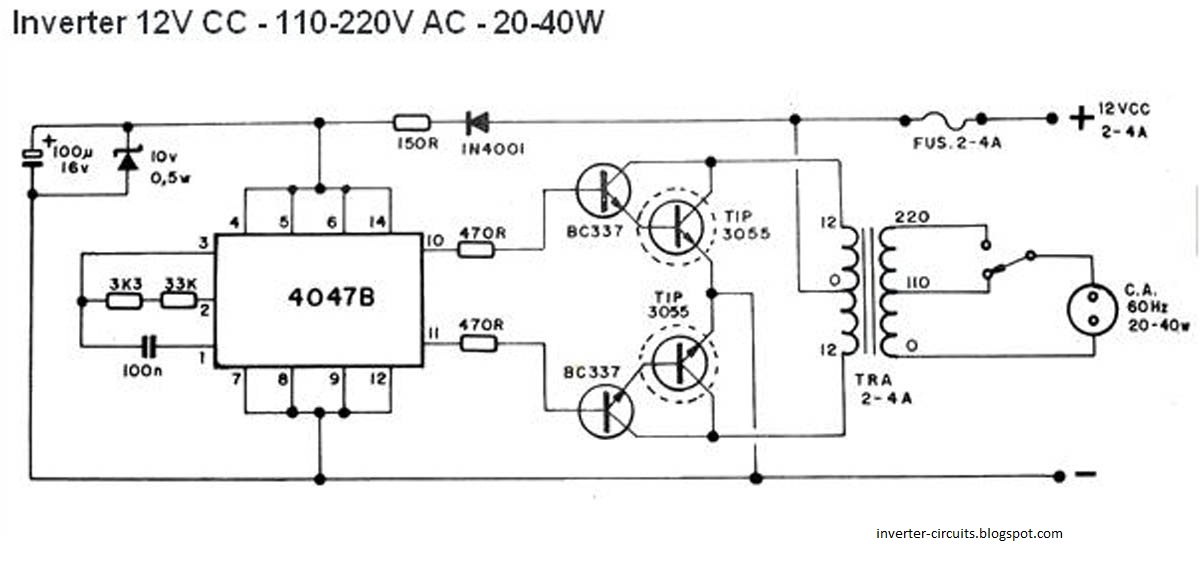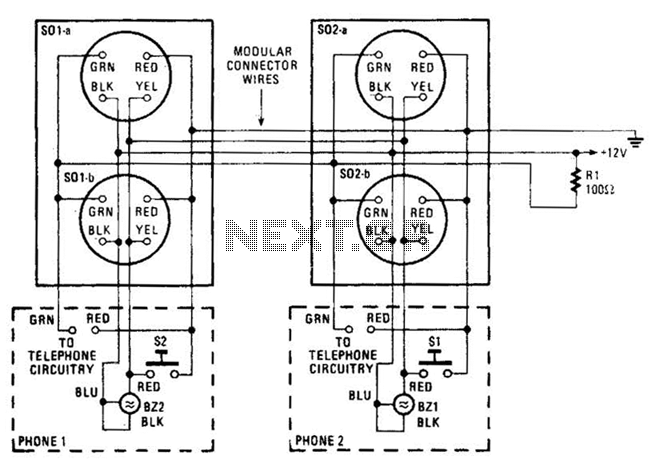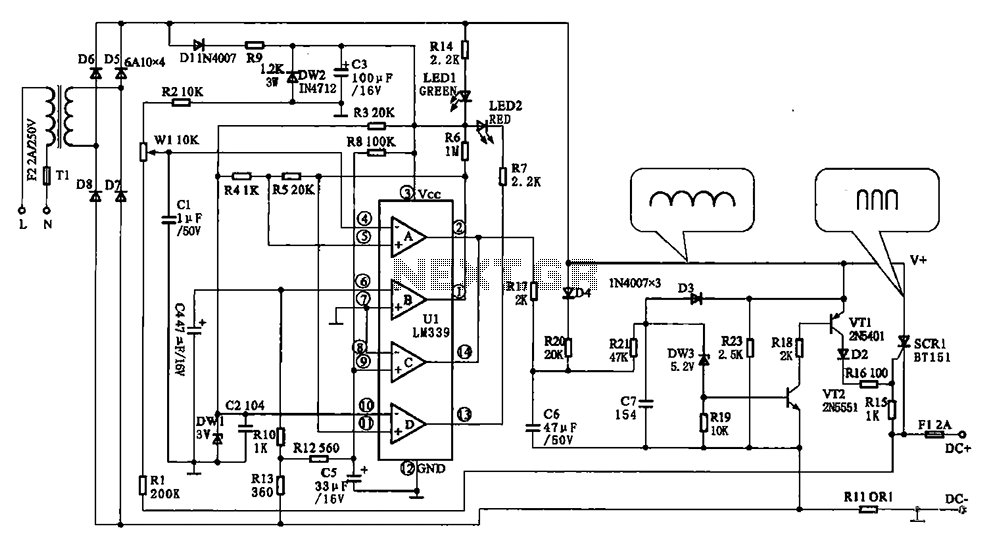
10 Step LED Circuit
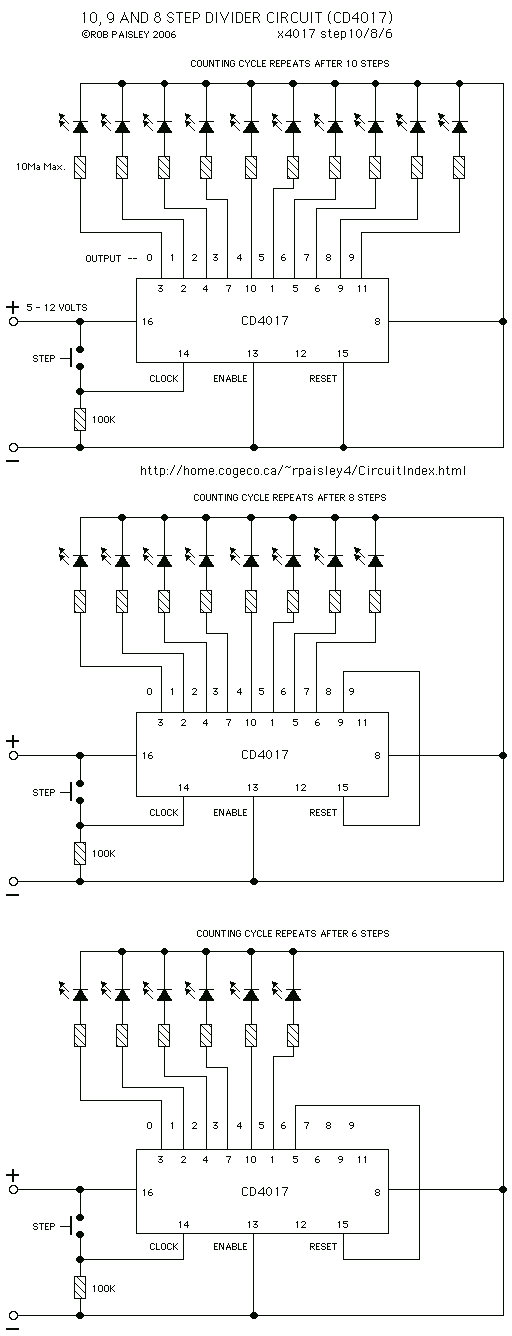
Each time switch S1 is closed the count on the CD4017 advances by 1 step and the corresponding LED turns on. When the maximum count plus 1 is reached for each circuit the cycle is restarted and repeats.
The circuit utilizes a CD4017 decade counter, which is a versatile component designed to count pulses and drive output devices such as LEDs. The operation begins with the closure of switch S1, which triggers the counter to increment its count by one. Each output pin (Q0 to Q9) corresponds to a specific count value and is designed to activate an LED when that count is reached.
The CD4017 has ten output pins, allowing it to count from 0 to 9. When the count reaches 10 (which corresponds to the maximum count of 9 on the output pins), the counter resets automatically, returning to 0 and restarting the counting cycle. This behavior is ideal for applications requiring sequential activation of multiple outputs, such as LED indicators.
In this configuration, each LED is connected to its respective output pin of the CD4017. A current-limiting resistor is typically placed in series with each LED to prevent excessive current flow, which could damage the LEDs. The value of these resistors can be calculated based on the forward voltage drop of the LEDs and the supply voltage used in the circuit.
The reset feature of the CD4017 can be utilized if external control is needed to reset the counter manually. This is accomplished by connecting the reset pin to a switch or another control signal. However, in this basic configuration, the automatic reset functionality suffices for continuous operation.
Power supply considerations must also be taken into account, ensuring that the CD4017 is powered within its specified voltage range (typically 3V to 15V) and that the LEDs are rated for the same voltage or appropriately connected to avoid damage.
Overall, this circuit provides a straightforward method for counting pulses and controlling multiple outputs in a sequential manner, making it suitable for various applications in electronic projects.Each time switch S1 is closed the count on the CD4017 advances by 1 step and the coresponding LED turns on. When the maximium count plus 1 is reached for each circuit the cycle is restarted and repeats. 🔗 External reference
The circuit utilizes a CD4017 decade counter, which is a versatile component designed to count pulses and drive output devices such as LEDs. The operation begins with the closure of switch S1, which triggers the counter to increment its count by one. Each output pin (Q0 to Q9) corresponds to a specific count value and is designed to activate an LED when that count is reached.
The CD4017 has ten output pins, allowing it to count from 0 to 9. When the count reaches 10 (which corresponds to the maximum count of 9 on the output pins), the counter resets automatically, returning to 0 and restarting the counting cycle. This behavior is ideal for applications requiring sequential activation of multiple outputs, such as LED indicators.
In this configuration, each LED is connected to its respective output pin of the CD4017. A current-limiting resistor is typically placed in series with each LED to prevent excessive current flow, which could damage the LEDs. The value of these resistors can be calculated based on the forward voltage drop of the LEDs and the supply voltage used in the circuit.
The reset feature of the CD4017 can be utilized if external control is needed to reset the counter manually. This is accomplished by connecting the reset pin to a switch or another control signal. However, in this basic configuration, the automatic reset functionality suffices for continuous operation.
Power supply considerations must also be taken into account, ensuring that the CD4017 is powered within its specified voltage range (typically 3V to 15V) and that the LEDs are rated for the same voltage or appropriately connected to avoid damage.
Overall, this circuit provides a straightforward method for counting pulses and controlling multiple outputs in a sequential manner, making it suitable for various applications in electronic projects.Each time switch S1 is closed the count on the CD4017 advances by 1 step and the coresponding LED turns on. When the maximium count plus 1 is reached for each circuit the cycle is restarted and repeats. 🔗 External reference
